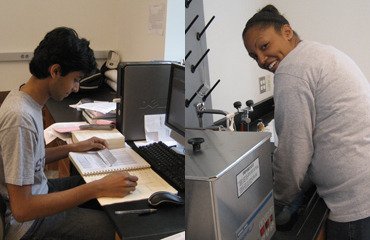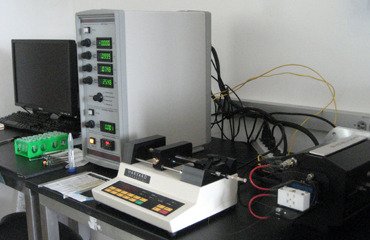Research

Environmental analysis:
- Pesticide biodegradation
Many pesticides are chiral, and the vast majority of chiral pesticides are applied as a racemic mixture of stereoisomers. This is despite evidence that (desired) toxicity and biodegradation are often very stereoselective. Previous field measurements have shown unequal proportions of chiral forms, which is likely the result of chiral degradation, and lab experiments have focused on the ability of particular bacterial species to degrade particular fungicides. This research project seeks to establish the link between field and lab by collecting bacteria from areas of pesticide exposure, using enrichment to isolate and identify bacterial species that can metabolize the pesticide, and then using chemical extraction and liquid chromatography to monitor the resulting biodegradation for changes in the proportions of each chiral form. - Detecting pesticides using ion mobility spectrometry
We are interested in using ion mobility spectrometry (IMS) for environmental analysis of contaminated waters. IMS gives much faster separations (millisecond time scale) than conventional chromatography. In IMS, gas-phase ions are separated using an electric field in the presence of a counter-flow of a neutral drift gas. The resulting separation is on the basis of both ion charge and size. Interfacing with mass spectrometry gives further information about species identification. - Beetle secretions
Recent work in our lab has shown that the defensive secretions of forked fungus beetles varied with their fungal food source and that the secretions of the ground beetle, Chlaenius cordicollis varied with geographic origin. This research was completed with solid phase microextraction interfaced with gas chromatography-mass spectrometry.
Major instrumentation used:
- Varian HPLC with diode array detector

- Varian GC-MS
- Excellims chiral ion mobility spectrometer-mass spectrometer (in-lab)
- Excellims ion mobility spectrometer (in-lab)
Collaborators:
- Amy Vollmer, Swarthmore College (chiral biodegradation of pesticides)
- Vince Formica, Swarthmore College (forked fungus beetles)
- Neil Holliday, University of Manitoba (Chlaenius cordicollis)
- David E. Clemmer, Indiana University (proline cluster analysis)
Funding:
Our research would not be possible without the support of:
- Research Corporation Multi-investigator Cottrell College Science Award (with Amy Vollmer), 2013-2015
- Research Corporation Cottrell College Science Award, 2009-2011
- National Science Foundation, Small Business Innovation Research (SBIR), sub-contract with Excellims Corporation, 2009
- HHMI-supported summer research fellowship for Faye Walker (summer '08), Hannah Rose (summer '10), Daniel Pak (summer '11), Travis Mattingly (summer '12) and Alec Toro (summer '13)
- Swarthmore Start-up Fund
- Swarthmore Research Fund for 2007–2009, 2009–2011, 2011–2013


